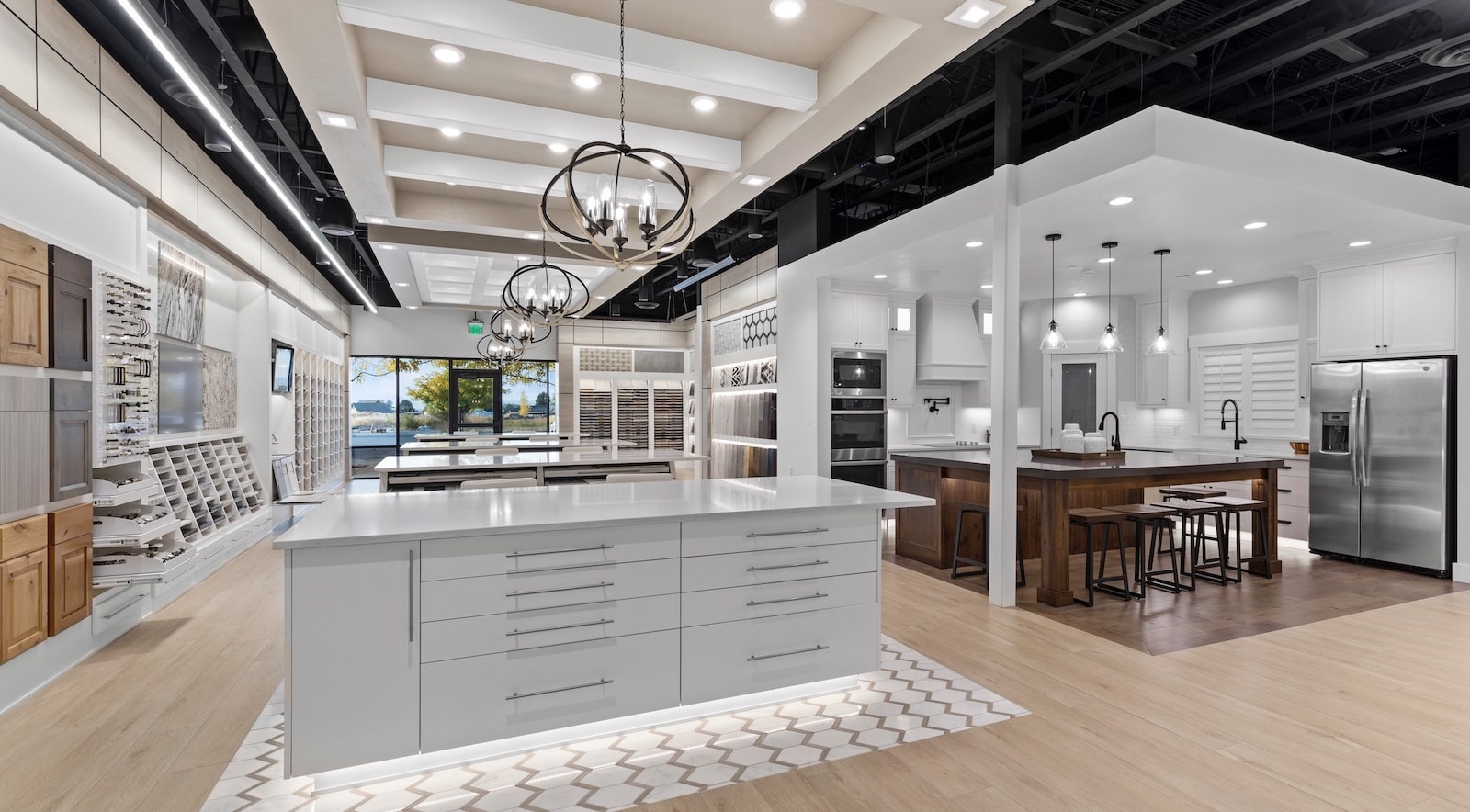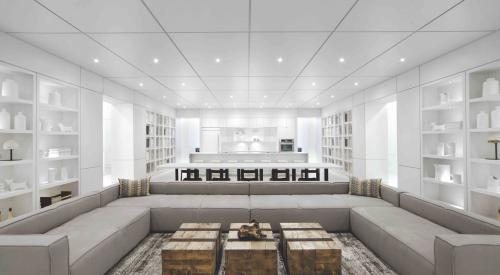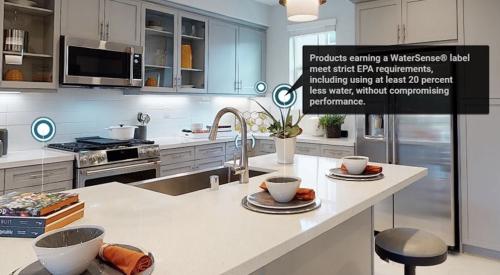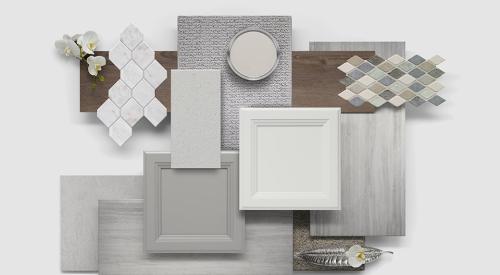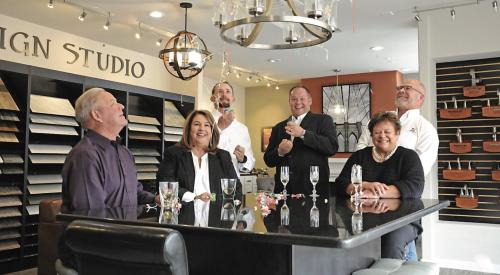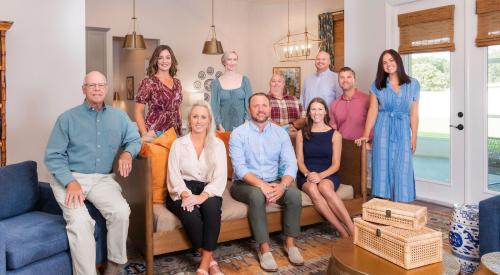What have we learned from the past 18 months of a global pandemic and its ripple effects on our society and industry, and what does the future look like for new-home design studios? These are questions I frequently hear from builders.
As business leaders, builders need to understand both the demand and the supply side of the equation when they consider how best to position their company and, specifically, its home-personalization strategy for a successful future.
Going Forward Post-Pandemic: Consumer Demand
What we’ve learned from the recent past is not really anything shockingly new, but rather an “anchoring in” of what customers have been telling us for a long time. The only difference is that, as an industry, we are now ready to listen, adjust, and deliver the buying experience consumers demand.
Specifically, today’s consumers want the same on-demand, omni-channel, interactive, customer-focused purchasing experience they've been getting from other retailers for years.
Until the pandemic hit, home builders thought they were immune to this truth and continued to force potential and current customers into a 9-to-5, Monday through Friday cycle for handling most, if not all, components of the homebuying journey. Sales centers, models, and design studios were typically not open during evenings, and most—if not all—appointments with sales, design, construction, and warranty were only in-person during typical business hours.
That model was forced to change almost overnight in early 2020, from in-person (if inconvenient) appointments to online experiences via websites and Zoom calls—a model consumers were ready and willing to embrace.
... as an industry, we are now ready to listen, adjust, and deliver the buying experience consumers demand. ... Specifically, today’s consumers want the same on-demand, omni-channel, interactive, customer-focused purchasing experience they've been getting from other retailers for years.
In a frantic reaction to the unusual circumstances, most builders amped up the quality and quantity of their digital resources and creatively stumbled their way through devising strategic operating procedures for virtual design studio previews and appointments.
In doing so, they developed the new and improved customer-facing digital tools and internal design studio resources that were needed to virtually provide part of the personalization experience.
But despite calls for builders to close brick-and-mortar design centers and offer options exclusively online, the indisputable reality is that the vast majority of homebuyers need to be physically in the design studio for at least some of their purchasing journey.
That’s because, at some point prior to finalizing and authorizing personal selections, buyers need to see with their own eyes, and touch with their own hands, the products in which they are investing multiple thousands of dollars (and will live with for many years to come), and receive concierge-level, in-person support from a qualified design studio professional to put it all together.
Now that we’re coming up for air, it’s time to move up the ladder toward creating an exceptional hybrid experience that homebuyers deserve: a two-fold solution for the future of design studios that does a far superior job of both virtual and in-person interactions. Hybrid (and on-demand) is here to stay, so let’s get to it.
RELATED
- Home Builders' Design Studios Go for a Retail Spin
- Marketing by Design Center
- A Fresh Take on Model Homes
Part 1: The Online Experience
The first component is to develop or improve customer-focused, menu-level digital or online tools that relay the totality of included and optional features in a more digestible, user-friendly way. And with that, to boost the skills of design studio professionals so they can deliver a superior design studio experience during those virtual interactions.
Digital or online tools must move beyond just “here’s a list of the names and prices of our options” augmented by a photo and/or a rudimentary product description. Most retailers would be out of business if their online product catalogs followed that model. There must be a proper design studio decision sequence or intuitive navigation that both customers and design studio professionals can use to make informed decisions.
More importantly, builders need to start realizing that “garbage in” means “garbage out.” Who in your company is tasked with the content creation for the data loaded into digital tools, options-specific software, and hard-copy documents that communicate the design options available? Who is crafting compelling product statements that help buyers identify product contrast, streamline decision-making, increase their desire for higher-level options, and justify a higher investment with facts about performance and quality?
With apologies to any data entry and purchasing teams capable of doing this work, I advise builders not to leave such tasks to team members who lack a deep understanding of buyers’ product evaluation process or who aren’t superb marketers. It’s going to take a multi-departmental effort to create tools on the level our buyers crave.
Part 2: The In-Person Experience
When buyers do arrive for the in-person components of their design studio journey, they now expect far more from the store. Why? Because as home prices rise, so do buyer expectations. As people encounter more sophisticated retail and hospitality environments more often, their expectations change accordingly.
And, as builder profits increasingly depend on improving cost efficiencies and generating higher options revenue, the design studio environment needs to work better and deliver more results. A professional design studio environment should increase product comprehension and support decision clarity. It should drive higher-level option sales by presenting products in a way that heightens buyer desire and increases perceived value.
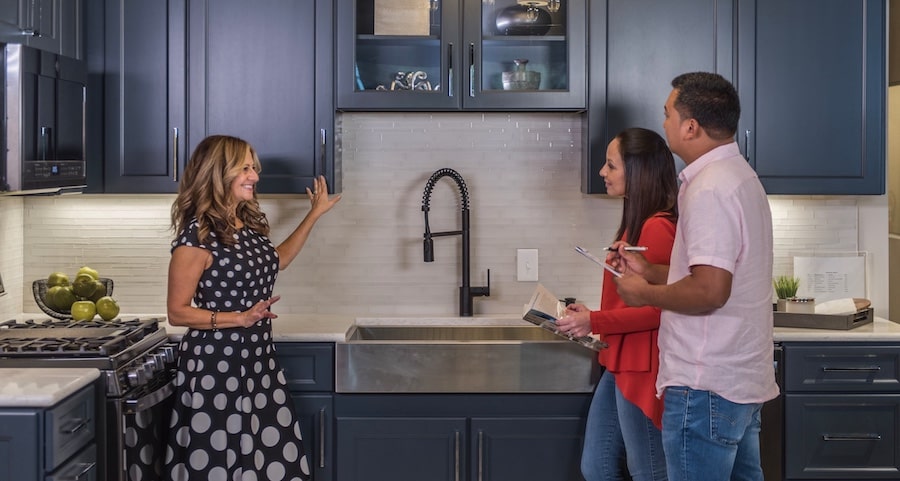
For prospective buyers visiting the design studio prior to purchase, the experience must offer tangible proof that the builder will deliver on brand promise, to essentially tell buyers: “You can trust us. We’re design, lifestyle, and product experts. We will effortlessly guide you to the uniquely personalized home of your dreams.”
And of course, the design studio environment should help to set accurate expectations regarding product details and installation specifics so you have a satisfied customer on closing day.
Supply Side: Builder Needs and Capabilities
While we can draw conclusions about what design studios of the future need to do to meet consumer demand, that’s only half the picture because the successful positioning of any retailers’ offering lies at the intersection of demand (consumer preferences) and supply (provider capabilities). It’s time to look at what builders need.
All builders face some similar circumstances. Land is getting more scarce. Supply chain challenges are becoming deeper and more costly. There’s little end in sight for labor shortages and their impact on cost. The long-overdue ramp-up to meet customer needs brings with it increased costs related to the required operational improvements, better resources (both customer-facing and internal), and a much better and consistently trained customer-facing builder team (across all customer-facing departments). Rising, and often unpredictable, cost increases are squeezing profit like never before. This is the reality of the home building industry’s future.
I could cut to the chase here and say costs need to go down and revenue needs to go up, but no answers lie inside that unrefined statement. The answers are buried in the specifics and idiosyncrasies of diagnosing the unique pathways each builder must travel to meet those goals, and then deploying appropriate resources and long-term discipline toward their relentless pursuit.
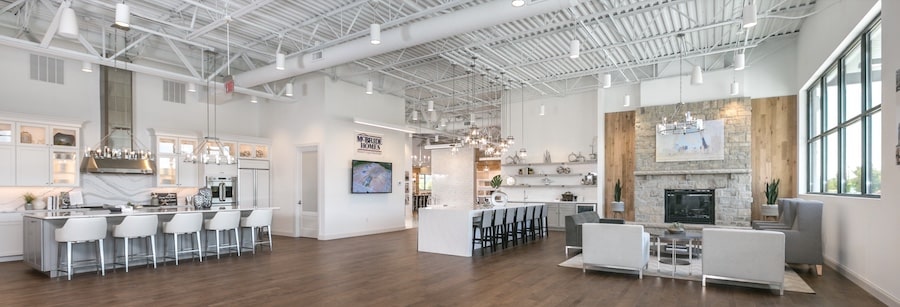
A critical point here is that there is absolutely no “one size fits all” solution, especially in the design studio realm. Every builder has unique opportunities based on factors such as current (and future) internal resources, competitive market position and brand image in the marketplace, overall organizational strengths and weaknesses, an accurate assessment of the builder’s current starting point and, ultimately, a crystal clear, specific vision of where they want to go.
Improving Your Operations
To counteract increased costs and other pressures and enable profitability for their design studios going forward, builders must become more cost effective and more operationally efficient.
Efficiencies in the design studio can be achieved by putting precious time and human resources to work proactively toward a long-term plan; one that is strategically sequenced to deliver the best results. (Hint: This is the opposite of being driven solely by market conditions.)
We work with hundreds of builders all over the country, and I’ve found that builders typically have a long list of ready answers to questions such as, “What are the current challenges with your options program and design studio operations that, if not fixed, would impede your planned growth?” or “What do you need to fix to reduce mistakes, inefficiencies, customer frustration, and lost revenue opportunities?”
However, the follow-up question, “What is your three- or five-year design studio action plan to overcome these challenges and ensure you attain your company goals?” doesn’t typically yield concrete answers.
For some builders, the design studio department lacks the “rules of engagement” that guide the sales and construction departments: a proactive long-term plan to reach targeted goals, standardized operating procedures, annual training for team members, and targeted specific initiatives to improve weak areas.
If you need a reason to get motivated to do this for your design studio, I suggest this: Identify the percentage of your annual revenue, and of annual profit, that comes from design studio operations. Does the effort you’re putting into improving this critical area of your business match its importance to your bottom line?
Efficiencies in the design studio can be achieved by putting precious time and human resources to work proactively toward a long-term plan; one that is strategically sequenced to deliver the best results. (Hint: This is the opposite of being driven solely by market conditions.)
If your response is, “Our buyers are already spending as much as they can in the design studio,” then ask how you truly know whether or not you are leaving money on the table. If the answer to that question is, “They’re already spending a lot … in fact, even more than they used to a few years ago,” then I think we both know that’s not the right answer.
Start with an audit of the design studio department. What works well operationally and what doesn’t? What are the bottlenecks in your customers’ design studio journeys? Provide both your internal design studio professionals and your customers with the resources they need to make faster, better decisions.
With that, consider adding a part-time or full-time support person to increase Design Consultant efficiency. Create structure by standardizing procedures and enforcing policies and reducing repetitive tasks. Then shift more of your Design Consultants’ time to directly serving customers and discussing product benefits, not just explaining what’s available.
RELATED
- Post-Pandemic: Homeowners Are Looking for Homes That Do More
- Tips for Using 3D Digital Models to Visualize and Sell Homes
Also, train your design studio team the way you train your sales team, and make it easier to onboard a new team member. Many smaller builders are afraid their Design Consultant(s) will leave the company because they don’t really know “what goes on in there,” and all could disappear tomorrow. You need to be able to easily onboard and train a new Design Consultant to accommodate company growth or personnel changes and to do so without creating a two-month backlog of homes that can’t be started.
Maximizing Per-Home Revenue
The solution for the future of design studios (and for builders’ financial health) is to maximize the revenue and profit on every home sold. Here’s why that’s indisputable: Annual home builder revenue is a function of volume (homes sold) times average sales price. And there are two fundamental and widely accepted presumptions about the next 1 1/2 years.
- Assumption 1: Builders are in the position now that they historically pray for: enough demand to fairly easily sell all of the homes in their annual plans/pro formas.
- Assumption 2: Base home prices can’t continue inflating at the current rate without cannibalizing the demand inherent in Assumption 1.
So where is the increased revenue going to come from? I’ll tell you: from high-profit options revenue that occurs after the initial home is purchased.
The solution for the future of design studios is to do more than capture the easy options dollars that somewhat naturally fall into builder pockets. We can all agree that some buyers will buy some options as long as builders put the choices in front of them and hire an “order taker” who is able to document their selections. Many builders think that if buyers really want something in the design studio, they’ll buy it. Fewer builders believe they are leaving money on the table in the design studio, even though they know there is precious high-profit options revenue that’s not being captured. Thinking that options more or less sell themselves is preposterous.
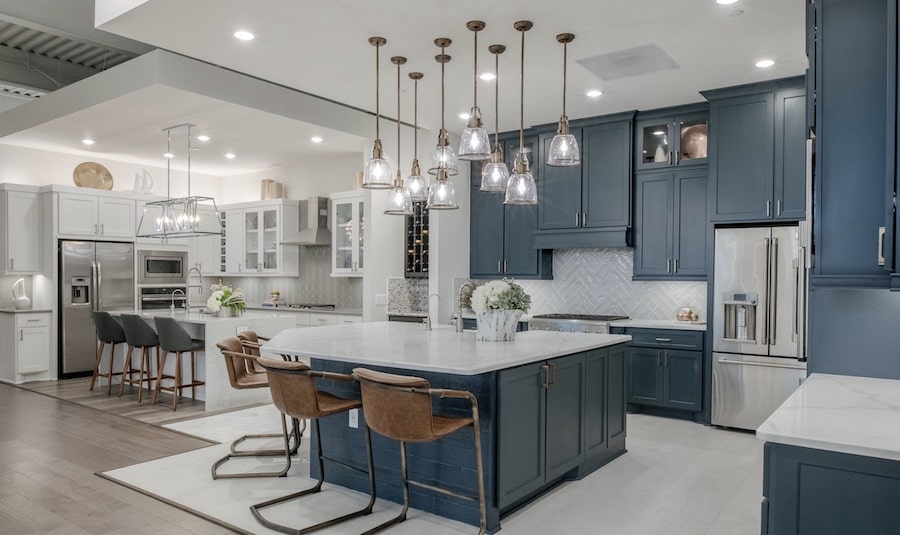
What would happen if a builder’s long-term business plan was based on a similar assumption? There would be no need to go overboard developing the best floor plans to keep up with consumer demand; no need to build model homes so buyers can imagine their future lifestyle and so they can see the quality of the construction; no need to develop user-friendly websites that allow buyers to easily navigate the choices, home in on the few best ones, talk to an online sales counsellor to get immediate answers to their questions and to schedule to meet with a highly trained professional salesperson who will expertly lead them to sign on the dotted line. Ask yourself how realistic any of that is, even in the hottest of a hot sales environment.
The solution for the future of design studios is to do more than capture the easy options dollars that somewhat naturally fall into builder pockets.
By contrast, just a few thousand dollars in uncaptured options revenue across 200 annual home sales equates to more than half a million dollars in additional, currently unreceived revenue and a solid few hundred thousand in bottom-line profit (and likely with little to no additional overhead costs). A $5,000 increase in average option sales over 400 homes per year delivers $2 million dollars in additional uncaptured revenue, or somewhere between $600,000 and $900,000 in your pocket. Year after year. The simple math begs the question: How can builders not pursue maximizing per-home revenue?
Sometimes builders forget that their competition for discretionary options dollars is not other builders, it’s The Home Depot, Wayfair, Amazon, and local flooring and cabinet stores. But often, builders forget that beyond the obvious, their competition for those options dollars—the ones that often get left on the table—is their customers’ other discretionary purchases, such as restaurant dinners, vacations, technology, and more.
Your job is to convince buyers that every dollar they put into their brand new home (which isn’t a dollar they spend on an Apple Watch or a fancy dinner) has a long shelf life. Every dollar they put into finishing their oversize luxury shower with a level-3 specialty tile, soothing rain showerhead, and high-quality frameless glass enclosure is an investment into the quality of their daily lives for years to come. Perhaps more importantly, it’s a long-term financial real estate investment that lasts more than a day, a week, a month, or even a year.
It boils down to this: Offer the right stuff at the right price in the right way—and then make sure your Design Consultants are expertly trained to promote, present, and sell the heck out of those optional products so that buyers happily invest in their uniquely personalized homes.
For those of you who found plenty of improvement ideas in this article, the time to prepare your company for the future of design studios is today.
Jane Meagher is president of Success Strategies, the nation’s leading design studio experts, and founder of The National Design Studio Institute, which produces an online on-demand training program called Design Consultant Pro (DC PRO).
